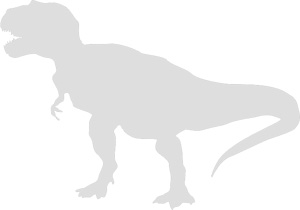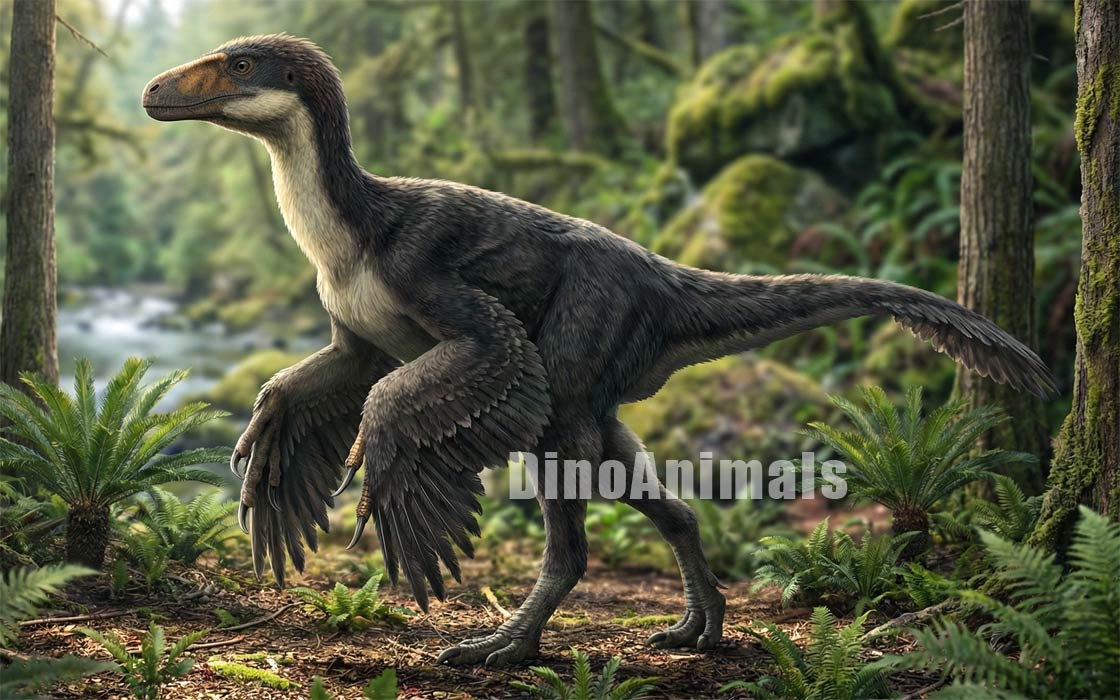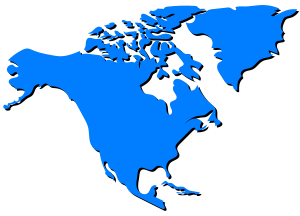Every month, 100,000 readers use the Dinosaur Database, but we receive no support from you. Developing and updating the database requires a lot of work. If you want it to remain open and be updated, please support us via the "Buy us a coffee" button available on every page or via the Support page.
Dinosaur: Mexidracon longimanus

| Length*: | 2.5 m | 8.2 ft |
| Weight*: | 45 kg | 99 lb |
*The largest known specimen
Period
Epoch: Late Cretaceous
Stage: Campanian)
Years: 83.6–72.1 Ma
Details
Status: valid
Author: Serrano-Brañas et al.
Year: 2025
Distribution
Area: North America
Country: Mexico
Region: Coahuila
Formation: Cerro del Pueblo
Description
Mexidracon longimanus
Mexidracon longimanus was an ornithomimid theropod dinosaur that lived during the Late Cretaceous period (Campanian stage), approximately 72.5 million years ago. It was discovered in the Cerro del Pueblo Formation in Coahuila, Mexico. The genus name combines “Mexi-” (referring to Mexico) and “-dracon” (from the Greek “drakōn,” meaning dragon). The species name, longimanus, refers to its unusually elongated hands, a feature that distinguishes it from other ornithomimosaurs.
Physical Characteristics
Mexidracon longimanus was a medium-sized ornithomimid, estimated to be around 2.5 meters (8 ft) in length. It had a lightweight, gracile build, with long legs adapted for fast running, a small, toothless skull, and a long neck. However, its most distinctive feature was its extremely elongated metacarpals, which were longer than its metatarsals—an unusual trait among ornithomimosaurs.
Key skeletal features include:
- Long forelimbs: The humerus was relatively slender, and the metacarpals were exceptionally elongated.
- Metacarpal proportions: Metacarpal III was longer than metatarsals II and IV, an autapomorphic trait.
- Pelvic adaptations: The pubis had a distinct boot shape, separated from the shaft by a deep notch.
- Hindlimb proportions: The femur was slightly longer than the tibia, and the foot was arctometatarsalian (narrowed third metatarsal).
- Iliac features: The pubic peduncle had a flared, zig-zag margin, wider anteriorly than posteriorly.
These adaptations suggest Mexidracon was highly cursorial, built for speed, and may have used its long forelimbs for specialized functions such as grasping vegetation or other feeding behaviors.
Diet and Feeding Habits
Like other ornithomimosaurs, Mexidracon longimanus was likely an omnivore or herbivore, feeding on plants, small animals, and possibly insects. Its toothless beak and long neck would have allowed it to browse for vegetation or scavenge opportunistically. The extreme elongation of its hands raises questions about whether it had a unique feeding strategy compared to other ornithomimosaurs, though no direct evidence supports this yet.
Habitat and Distribution
Mexidracon longimanus lived in what is now northern Mexico, specifically the Cerro del Pueblo Formation in Coahuila. During the Late Cretaceous, this region was a coastal floodplain with a mix of terrestrial and shallow marine environments. The formation contains fossils of various dinosaurs, including hadrosaurids and deinocheirid ornithomimosaurs (Paraxenisaurus normalensis), indicating a diverse ecosystem.
Behavior and Social Structure
There is no direct evidence of social behavior in Mexidracon, but related ornithomimosaurs are thought to have lived in groups, based on fossil trackways. Its long legs suggest it was a fast runner, possibly using speed as its primary defense against predators. The function of its elongated hands remains unclear, but they may have played a role in foraging or display behaviors.
Discovery and Research
The holotype of Mexidracon longimanus (Holotype BENC 32/2-0001) was discovered at Loma Prieta, near Jalpa, in General Cepeda Municipality, Coahuila, Mexico (coordinates: 25°30′40″N, 101°39′20″W) by Claudio de León-Dávila in 2014. The specimen includes partial vertebrae, pelvic girdle elements, a nearly complete forelimb, and a well-preserved hindlimb. It was first described in 2025 by Claudia Inés Serrano-Brañas and colleagues in Cretaceous Research. Phylogenetic analysis places Mexidracon within Ornithomimidae but suggests it represents a unique lineage due to its elongated metacarpals.
Significance and Interesting Facts
- Mexidracon longimanus is the first ornithomimid from Mexico with well-preserved hand material.
- It had the longest metacarpals relative to its body size of any known ornithomimosaur.
- It lived alongside the giant deinocheirid Paraxenisaurus normalensis, another large ornithomimosaur from the same formation.
- The Cerro del Pueblo Formation provides evidence that ornithomimosaurs and deinocheirids coexisted in Late Cretaceous North America.
- Its discovery expands knowledge of ornithomimid diversity in Laramidia, particularly in its southern regions.
Locations
Sources
Material: Holotype specimen, BENC 32/2-0001. Dorsal, sacral, and caudal vertebrae, haemal arches, left humerus, left metacarpals I–III, partial left and right pelvic girdles, complete left femur, partial right femur, complete left tibia, proximal end of right tibia, proximal end and partial shaft of left fibula, proximal end of right fibula, distal tarsals 3 and 4, left metatarsals II–IV, four pedal phalanges.
References: Serrano-Brañas, C. I., Espinosa-Chávez, B., de León-Dávila, C., Maccracken, S. A., Barrera-Guevara, D., Torres-Rodríguez, E., & Prieto-Márquez, A. (2025). "A long-handed new ornithomimid dinosaur from the Campanian (Upper Cretaceous) Cerro del Pueblo Formation, Coahuila, Mexico". Cretaceous Research: 106087




